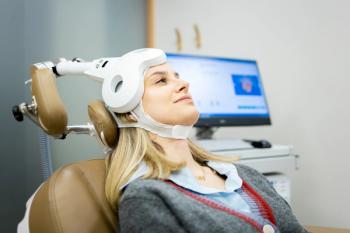
A Promising, Yet Controversial, Approach to Treating Depression
Mounting evidence shows the endogenous opioid system is a potential therapeutic target for mood disorders, yet questions remain.
RESEARCH UPDATE
The currently available treatment options for depressive disorders have limitations and many sufferers are left with either residual symptoms (treatment refractory depression), or worse-a syndrome of lack of response, or treatment-resistant depression (TRD).1 There is a need to expand the currently available options and recently, after having been the standard of care in the 19th century, the opioid system has re-emerged as a potential therapeutic target for mood disorders.2
There is evidence from neurobiological studies that opioid receptors are densely distributed in cortical areas involved in stress response, as well as subcortical areas involved in emotion regulation.3 Clinically, the kappa opioid receptors in particular have been shown to have antidepressant effect when blocked and have led to dysphoric reactions when activated, while mu receptor blockade has not had any effect.4,5
As a result, use of
In our
The two most striking randomized controlled trials included in our review are from 2016.10,11 In a study by
In the second noteworthy study,
This presents a very promising approach to the treatment of TRD. At such low doses,
In both studies, withdrawal was not noted on discontinuation; however, these trials were all time-limited in duration. Of consideration, buprenorphine is a Schedule III controlled substance and long term-use can certainly lead to risks or misuse, abuse, and diversion.
Clinical bottom line
The endogenous opioid system presents yet another therapeutic target with mounting evidence of its involvement in mood disorders. Significant evidence supports an antidepressant effect of low dose (<= 2 mg) buprenorphine in individuals with TRD. Before this becomes widely implemented clinically, however, further prospective randomized controlled trials should be undertaken.
Disclosures:
Dr Stanciu is Assistant Professor of Psychiatry at Dartmouth’s Geisel School of Medicine and Director of Addiction Services at New Hampshire Hospital, Concord, NH.He is Addiction Section Editor for Psychiatric Times. The author reports no conflicts of interest concerning the subject matter of this article.
References:
1. American Psychiatric Association. 2010. Practice guideline for the treatment of patients with major depressive disorder (3rd Ed).
2. Carlezon WA, Beguin C, Knoll AT, et al. Kappa-opioid ligands in the study and treatment of mood disorders. Pharmacol Ther. 2009;123, 334-343.
3. Lutz PE, Kieffer BL. Opioid Receptors: distinct roles in mood disorders. Trends Neurosci. 2013;36(3):195-206
4. Falcon E, Browne CA, Leon RM, et al. Antidepressant-like effects of buprenorphine are mediated by kappa opioid receptors. Neuropsychopharmacology. 2016; 41:2344-2351.
5. Terenius L, Wahlstrom, JA, Bigelow GE, et al. Naloxone (Narcan) treatment in depression: clinical observations and effects on CSF endorphins and monoamine metabolites. Psychopharmacology (Berl). 1977;54:31-33.
6. Williams NR, Heifets BD, Blasey C, et al. Attenuation of Antidepressant Effects of Ketamine by Opioid Receptor Antagonism. Am J Psychiatry. 2018;175:1205-1215.
7. Vilevielle T, Mion G. Ketamine pharmacology: an update (pharmacodynamics and molecular aspects, recent findings). CNS Neurosci Ther. 2013;19:370-380.
8. Cowan A. Buprenorphine: the basic pharmacology revisited. J Addict Med. 2007;1:68-72.
9. Stanciu CN, Glass OM, Penders MT.
10. Fava M, Memisoglu A, Thase, ME, et al.
11. Yovell Y, Bar G, Mehsiah, M, et al.
Newsletter
Receive trusted psychiatric news, expert analysis, and clinical insights — subscribe today to support your practice and your patients.














